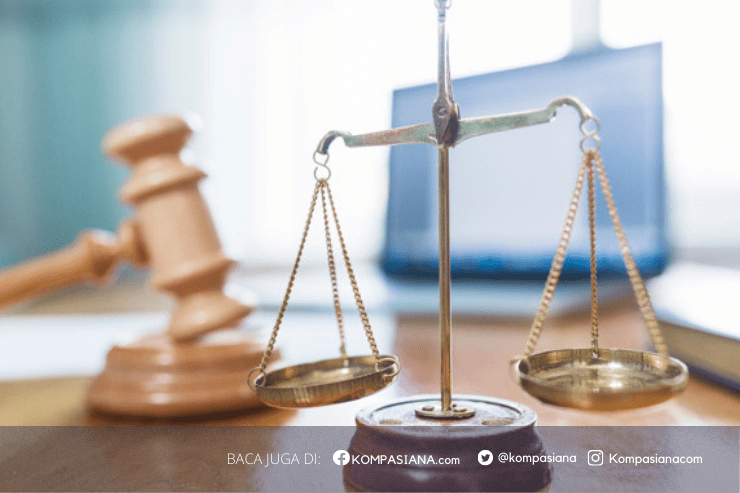Safety and security is paramount importance in the operation of air transport. Although an aircraft designed well to ensure with a high level of safety, however, accidents may happen in anytime and harm human life. It is unpredictable and unpreventable and can be caused by several different major of factors including human error, bad weather, engine failure, aviation component failure, device failure, air traffic control error, bird strikes, design flaws, sabotage fuel starvation, high jacking or lighting problems. To date, there are a number of deadliest air disasters involving Indonesia-based commercial airlines in Indonesian airspaces.
On 5 September 2005, Mandala Airlines RI 091 ("RI 091"), a Boeing 737-200, departed from Medan to Jakarta. RI 091 failed to reach flight and overran runway 23, demolishing several approach lights. It traveled through a grassy area, over a river and impacted buildings and vehicles before coming to a stop on the road. A post-crash fire destroyed parts of the airplane and from 117 persons on board, 95 passengers and 5 crew members on board were killed, 15 passengers were seriously injured and 2 passengers (a mother and child) survived without any injuries.
Moreover, on 28 December 2014, Air Asia 8501, an Airbus A320-216 operated by PT Indonesia Air Asia (Air Asia), crashed in the Java Sea near Borneo while traveling from Surabaya to Singapore, which resulted in the death of all 156 passengers and 6 flight crew members on board (155 Indonesian, 3 South Korean, 1 French, 1 Malaysian, 1 Singaporean and 1 British).
Recently, on 29 October 2018, Lion Air Flight JT 610 ("JT 610") crashed in the Java Sea after taking off on a domestic flight from Jakarta to Pangkal Pinang, Indonesia. The crash resulted in the death of all 182 passengers and 7 flight crew members on board (186 Indonesian, 1 Indian and 2 Italian). Based on a preliminary investigation, the Indonesia National Transportation Safety Committee (Komite Nasional Keselamatan Transportasi/ "KNKT") indicated the JT 610 experienced airspeed indicator malfunction during its last four flights and erroneous input from one of its AOA (Angle of Attack) sensors. Presently, officials are still learning and investigating the case to better understand the possible cause of the crash. The process may take months before a final conclusion can be formulated surrounding the catastrophic incident. Therefore, it is too soon and unwise to speculate on the origin of the crash.
Obviously, the aircraft crash survivors may suffer devastating injuries that could have life-long effects or their family may suffer overwhelming financial losses. The airline and the airplane manufacturer often times deemed as the parties who hold the legal liability of the crash. However, such legal liability must be determined on case by case basis through a myriad of international treaties, inter-carrier agreements and regional laws and regulations which may apply in a specific situation depends on various circumstances surrounding the crash. The relevant laws and regulations in Indonesia related to the liability of commercial aircraft crash to the passengers will be explained below.
International Laws
1. Convention for the unification of certain rules relating to international carriage by air ("Warsaw Convention")
The Warsaw Convention is an international convention that commands responsibility for the international transport of a passenger, baggage and cargo by air. This convention was firstly created through an international conference on air law which was held in Paris in 1929 to protect the fledgling international aviation industry by providing a uniform law and limiting an airline's liability to passenger(s).
Warsaw Convention only applies to international carriage of persons, luggage or goods by aircraft. Under Warsaw Convention, the airline is liable to damage caused by the death or injury of a passenger when the accident takes place on board the flight or in the process of embarking or disembarking, destruction or loss of or damage to baggage and cargo and liability for damage caused by delay in the carriage by air of passengers, baggage and cargo. Liability is not applicable if the airline can prove to the court that it has taken all necessary measures to avoid the damage or it was impossible for them to take such measures. The liability of the airline for death, wounding or other bodily injuries of passengers limited to 125,000 French francs or equivalent to USD 8,300 (in 1929).
Warsaw Convention establishes four jurisdictions for passengers to submit their claim for damages namely, (i) before the court at the domicile of the airline, (ii) before the court of the principal place of business, (iii) before the court at the place of business where the contract was made and (iv)before the court at the place of destination. However, the Warsaw Convention only gives the passengers a window of two years to file the lawsuit. The Indonesian court applied such provision in case no.639/Pdt.G/2008/PN.Jkt.Sel between Dono Indarto v Emirates Airline where the airline was domiciled in the United Arab Emirates and the place of destination was in Jakarta, Indonesia. During the case, the District Court of Jakarta stated the court had jurisdiction to adjudicate the case.
Indonesia had ratified Warsaw Convention and implemented it to Indonesian law through Air Carrier Ordinance No. 100 of 1939 (Ordonansi Pengangkutan Udara Nomor 100 Tahun 1939). Nevertheless, the Indonesian court has not consistently applied the convention. For instance, in case number 970K/Pdt/2002 between Garuda Indonesia airline v Eunike Mega, the Supreme Court refused to apply the Warsaw Convention. While in case no.639/Pdt.G/2008/PN.Jkt.Sel above, the court applied the jurisdiction provided by Warsaw Convention and in the case no.1517K/Pdt/2009 between Singapore Airline v Sigit Sucahyono, which the court specifically applied Article 25 of the Warsaw Convention, the compensation amount was not limited if the damage was caused by the airline's willful misconduct. The court also referred to Article 17 of the Warsaw Convention and deemed the claimant had fulfilled the element of bodily injury, which included the existence of an injury and that such injury occurred in the airline, during the course of embarking and disembarking.








